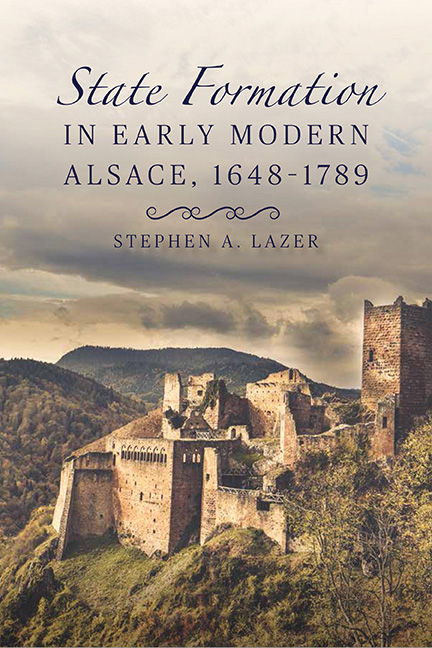Book contents
3 - All the Duke's Men
Published online by Cambridge University Press: 31 August 2019
Summary
“The prince of Deuxponts is master of the bailliage [Amt] and not of the department.” With this sentence, Intendant de Vanolles demarcated the formal barrier separating the French and ducal administrations. This de jure description, however, proved by no means so clearly defined in practice, as there was a great deal of seepage between the ducal and royal administrations. We have seen how the bailiff, although appointed by the duke of Pfalz-Zweibrücken, also carried out a variety of provincial and thus royal duties, creating an officialdom that served two masters. If the arrangement benefitted the crown, it also benefitted the dukes: having their men in the provincial administration allowed the dukes to exercise significant influence in provincial affairs because their own officials held critical posts. Over time, these arrangements allowed the Birkenfelds to use precedent and tradition to ensure the intendant chose their men.
This chapter analyzes the process by which the dukes of Pfalz-Zweibrücken-Birkenfeld maintained total control over seigneurial appointments that were simultaneously provincial ones. Multiple powers constituted Alsace's political culture: the French, the dukes, and the local communities. The preservation, indeed, extension, of ducal autonomy resulted from the interaction of two important political factors: the relative lack of venal offices and the effective resistance to outside patronage that the dukes were able to marshal. Over the course of the period after French rule stabilized—after 1714—provincial institutions such as the intendant and the Sovereign Council sought to influence ducal decision-making. They were only partly successful. The Birkenfelds worked to preserve their independence of action while remaining within the confines of French law. They sought to enforce what they regarded as their rights, even when it meant they thereby trespassed on what was formally the intendant's jurisdiction. On the surface of things, it may seem that the dukes’ hand was a weak one. However, an examination of the pressures brought to bear on the dukes, their resistance to such pressures, and their own intercessions into Alsace's patronage networks reveals how they benefitted from the interplay between sovereignty and territorial superiority.
Especially critical in this game of administrative chess was the bailiff, who represented the point where ducal and royal administrations met. As seigneurs, the dukes of Pfalz-Zweibrücken-Birkenfeld and other Alsatian rulers retained the final say in deciding who would serve as bailiff.
- Type
- Chapter
- Information
- State Formation in Early Modern Alsace, 1648–1789 , pp. 76 - 113Publisher: Boydell & BrewerPrint publication year: 2019

